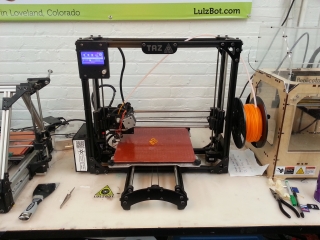Scotland is a place that, for the average American, provokes strong reactions. Single malt Scotch whisky. Haggis. And bagpipes. At least in America, the thought of 3D printed bagpipes may inspire fear in some people. Bagpipes were considered weapons of war, and commonly thought to be banned following the unsuccessful Jacobite Rising of 1745. (The Act of Proscription 1746 doesn’t directly mention them, though.) Personally, I’m quite a fan of pipe music, as well as other Scottish folk music, such as the Corries, and the music of Nova Scotia, especially Mary Jane Lamond.
I bought a Highland bagpipe practice chanter years ago, only to discover that the angle I had to hold it to keep my fingers in the right position was torture on my wrists. I figure it would be more comfortable to play when attached to an actual bag. But acquiring a full set of Highland bagpipes wasn’t terribly practical, and that would probably lead to my neighbors breaking down my door and coming after me with torches and pitchforks should I try to practice indoors. Or at least they’d complain to the condo association. So I forgot about that for a while.
Then in spring of 2014 I saw the Dreaming Pipes Kickstarter posted by Donald Lindsay of Glasgow. He was creating a 3D printed chanter with a customized extended range for the Scottish smallpipes, which are, as their name suggests, smaller, and designed to be played indoors. But he was also creating plans for a full set of smallpipes modeled off a 17th century design that could be 3D printed, with a laser cut bellows. And he was also designing 3D printed Highland bagpipe drones. I’ve got access to four 3D printers and a laser cutter at Pumping Station: One. It looked like fun to build. So I backed it.
